You can breeze through Exploring Taiwan (博物台灣) in less than an hour — or spend all day here examining, for example, every location on the oldest Chinese landscape-style map of Taiwan or learn more than you ever wanted to know about the nation’s rocks.
The National Taiwan Museum’s (國立台灣博物館) new permanent exhibition showcases unique specimens and artifacts from the nation’s layered human and natural history, but one of the more impressive features is the thoughtful and incredibly informative interactive displays accompanying the objects.
Another panel showing videos and images of festivals in Taiwan allows the user to switch between the lunar and solar calendars, and includes not only Han and Aboriginal celebrations, but also Western and Southeast Asian ones that are observed by other populations in Taiwan. Just going through these clips can keep you here for a while.
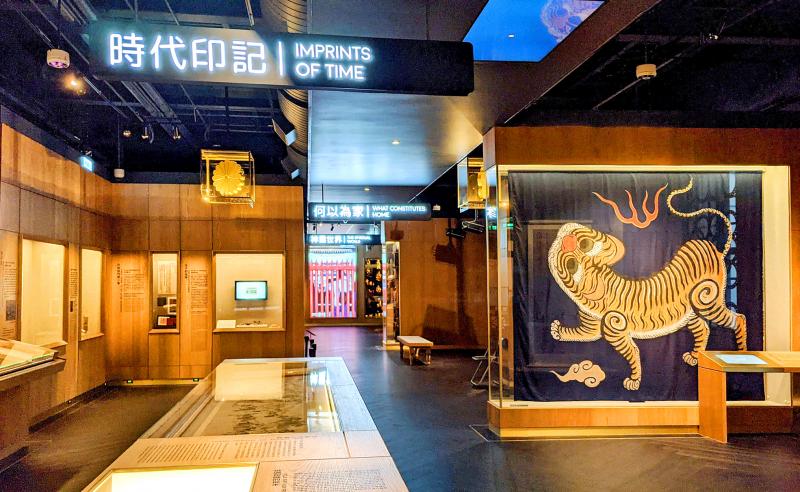
Photo: Han Cheung, Taipei Times
The tastefully designed, wood-themed exhibition is divided into two parts on each wing of the museum’s second floor; you can start at either one. The portion about natural history is pretty straightforward and extensive, filled with objects ranging from fossils to gems to various flora and fauna organized by elevation.
Like the cultural part of the exhibition, diversity is emphasized and the focus is on how Taiwan’s varied landscapes, elevation and climate contribute to its biological richness. This part ends with a discussion about sustainability and our impact on the environment.
In addition, visitors can view a nature video sitting alongside sculptures of a clouded leopard and Formosan black bear, and listen to the sounds of nature on a wall carved from wood from the camphor tree, oil from which was once Taiwan’s most coveted commodity.
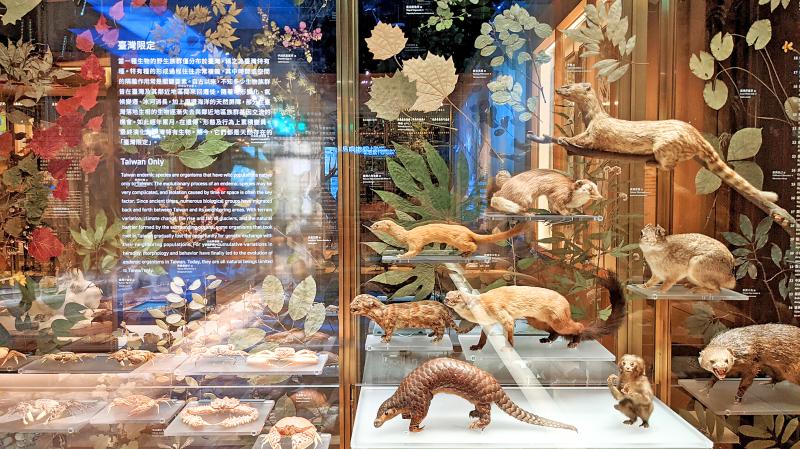
Photo: Han Cheung, Taipei Times
It’s much more difficult to explain the nation’s complex cultural history in one hall, and this exhibition doesn’t try that difficult feat. You’ll need some basic knowledge of Taiwan’s past and present to fully appreciate this portion of the exhibition, which whisks the visitor through time with 16 fascinating historical objects before exploring its population’s idea of “home.”
Since the entire show is meant to explore the nation’s diversity, the curators are very conscious of representation. For example, they explain in the first display — a series of 19th century paintings of Taiwan’s Aborigines by a Han Taiwanese artist — that “this work seems realistic, but it actually reflects the Han people’s stereotypical impressions … It may be regarded as a simplistic visual version of how Han Chinese interpreted the indigenous culture at that time.”
The historical objects mostly deal with Taiwan’s interactions with the outside world, including an Aboriginal-language shopping list written in the Dutch-imparted Latin alphabet, a painting that supported the Japanese colonizers’ push to eradicate the longstanding Han practice of foot binding and the pens that were used to sign the Sino-American Mutual Defense Treaty in 1954.
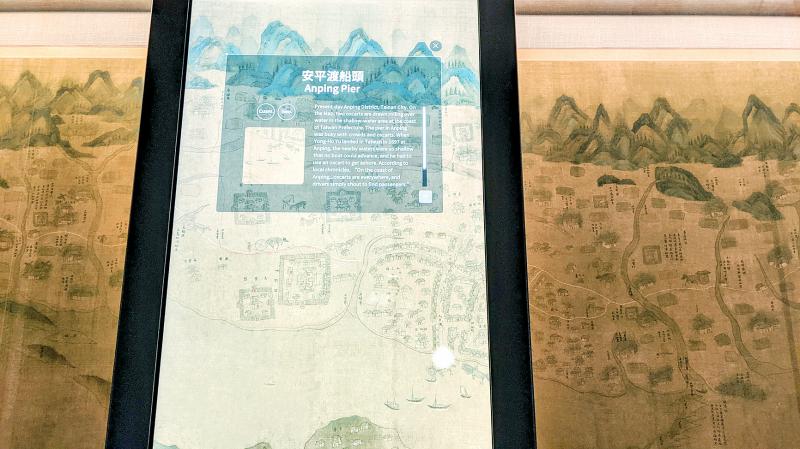
Photo: Han Cheung, Taipei Times
The giant, double-sided blue-and-yellow tiger flag of the short-lived Republic of Formosa is probably the most striking. The original version has been lost, and on display is a digitally reconstructed version the museum created in 2012. What’s unique with this flag is that it provides a glimpse of the “other” side of the flag that is rarely seen in modern depictions.
The rest of the show deals primarily with the traditional and modern life of Taiwan through video, art installations and more objects. Especially of note is the collection of “discarded” statues of Buddhist and Taoist deities that people threw away over the years for various reasons. They’re often left outside Taipei’s Longshan Temple (龍山寺), which de-sanctified them and donated 271 to the museum in 2015.
Finally, the section of objects various peoples created to represent “the other” gives much food for thought. The Japanese depicted the Taiwanese in miniature figurines, Westerners (quite inaccurately) imagined the locals on their Formosan tea labels, Aborigines created carvings of the Japanese soldiers who subjugated them and the Han presented a variety of ethnicities through their traditional hand puppets.
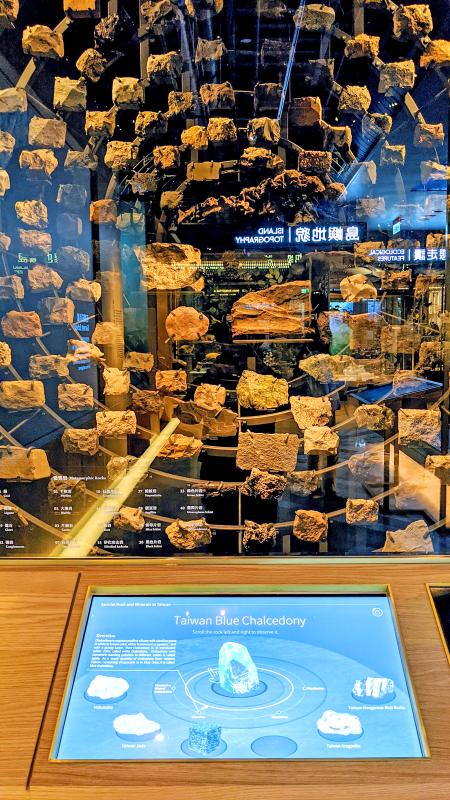
Photo: Han Cheung, Taipei Times
Both sides of the exhibition end with a MIT (Made In Taiwan) display, arranging the letters with mini models of the natural creatures of Taiwan (pineapple and Formosan magpie) and its human-made products (including bubble tea).
Overall, the exhibition is a wonderful journey that is well-worth seeing. We often forget how unique Taiwan is, especially during these times when it’s difficult to travel overseas, and this show reminds us to appreciate Taiwan more.
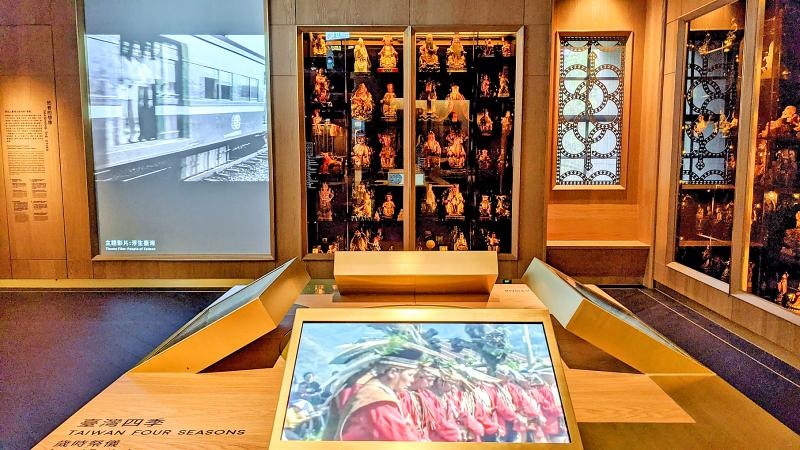
Photo: Han Cheung, Taipei Times
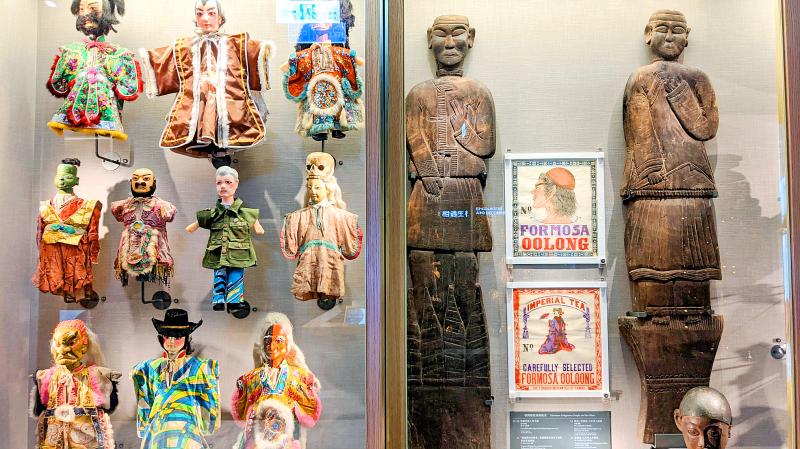
Photo: Han Cheung, Taipei Times
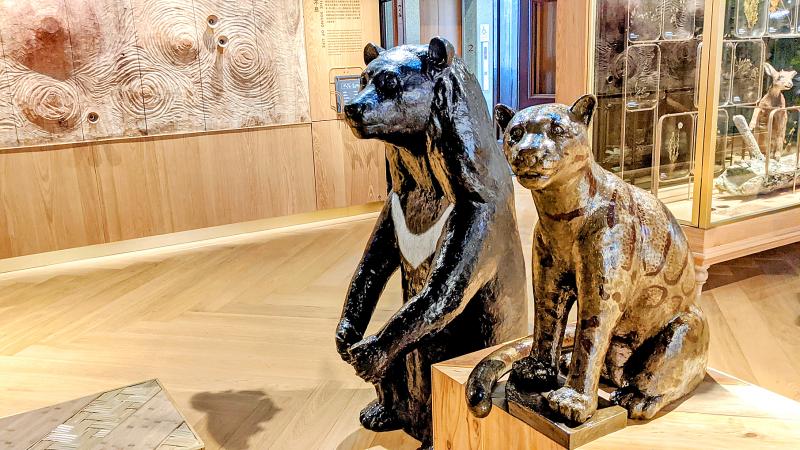
Photo: Han Cheung, Taipei Times

Every now and then, it’s nice to just point somewhere on a map and head out with no plan. In Taiwan, where convenience reigns, food options are plentiful and people are generally friendly and helpful, this type of trip is that much easier to pull off. One day last November, a spur-of-the-moment day hike in the hills of Chiayi County turned into a surprisingly memorable experience that impressed on me once again how fortunate we all are to call this island home. The scenery I walked through that day — a mix of forest and farms reaching up into the clouds

With one week left until election day, the drama is high in the race for the Chinese Nationalist Party (KMT) chair. The race is still potentially wide open between the three frontrunners. The most accurate poll is done by Apollo Survey & Research Co (艾普羅民調公司), which was conducted a week and a half ago with two-thirds of the respondents party members, who are the only ones eligible to vote. For details on the candidates, check the Oct. 4 edition of this column, “A look at the KMT chair candidates” on page 12. The popular frontrunner was 56-year-old Cheng Li-wun (鄭麗文)

“How China Threatens to Force Taiwan Into a Total Blackout” screamed a Wall Street Journal (WSJ) headline last week, yet another of the endless clickbait examples of the energy threat via blockade that doesn’t exist. Since the headline is recycled, I will recycle the rebuttal: once industrial power demand collapses (there’s a blockade so trade is gone, remember?) “a handful of shops and factories could run for months on coal and renewables, as Ko Yun-ling (柯昀伶) and Chao Chia-wei (趙家緯) pointed out in a piece at Taiwan Insight earlier this year.” Sadly, the existence of these facts will not stop the

Oct. 13 to Oct. 19 When ordered to resign from her teaching position in June 1928 due to her husband’s anti-colonial activities, Lin Shih-hao (林氏好) refused to back down. The next day, she still showed up at Tainan Second Preschool, where she was warned that she would be fired if she didn’t comply. Lin continued to ignore the orders and was eventually let go without severance — even losing her pay for that month. Rather than despairing, she found a non-government job and even joined her husband Lu Ping-ting’s (盧丙丁) non-violent resistance and labor rights movements. When the government’s 1931 crackdown